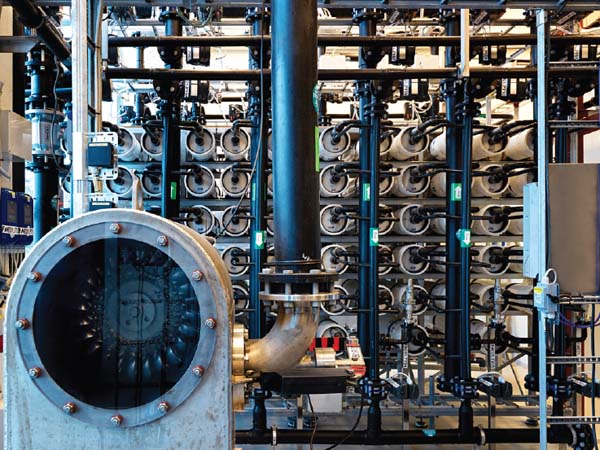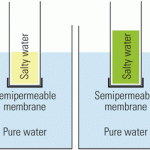Statkraft began operating its 4-kW prototype osmotic power plant at Tofte, just outside Oslo, Norway, in 2009. Now the firm reports that it is close to developing a large-scale plant. In June, Statkraft and Japanese materials manufacturer Nitto Denko/Hydranautics signed an agreement for the development and supply of membranes specifically designed for use in large-scale osmotic power plants.
The agreement is a crucial step in making the novel power generation mode a reality, Statkraft said. The prototype produces power based on the natural phenomenon of osmosis—or the transport of water through a semi-permeable membrane (Figure 6). (For a more detailed description of how the osmotic power circuit operates, see “Osmotic Power from the Ocean” in our December 2006 issue at https://www.powermag.com.) It uses polyimide as a membrane, producing 1 W/square meter of membrane, an amount of power obtained at 10 liters of water flowing through the membrane per second and at a pressure of 10 bar.
 |
| 6. Membrane channel. At Statkraft’s prototype osmotic power plant at Tofte, outside Oslo, Norway, freshwater and saltwater are guided into separate chambers, divided by an artificial membrane. The salt molecules in the seawater pull the freshwater through the membrane, creating pressure on the seawater side equal to a 120-meter water column—or a significant waterfall—that can be used to generate power. The membranes are coiled up inside the pressure vessels shown here. A turbine, such as on the bottom left of this image, is used to generate power. Courtesy: Statkraft |
Osmotic power has a global potential of 1,600 TWh to 1,700 TWh per year, Statkraft claims, but the company admits several challenges must first be overcome before it can launch a commercial plant between 2015 and 2020. While Nitto Denko/Hydranautics will tackle the technical challenge of making the membrane much more efficient than it is today, Statkraft will deal with the soaring price of producing osmotic power.










